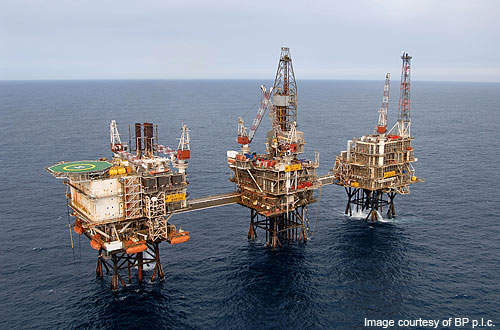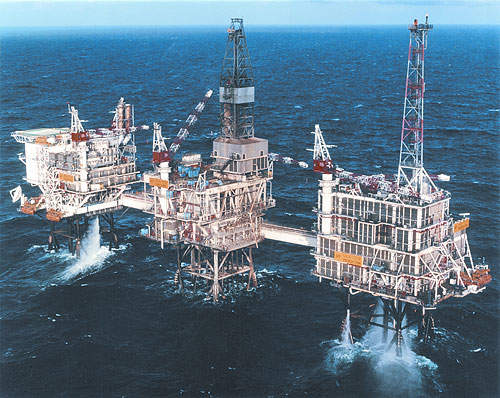Ula oil field lies in block 7/12 (PL019A) in the southern Norwegian section of the North Sea. It lies at a water depth of about 70m. The field has been in production since October 1986. It is expected to produce until 2028.
BP Norge is the operator of the field and holds 80% interest. A 20% stake is held by DONG Energy. DONG increased its ownership from 5% to 20% with the acquisition of a 15% stake from Svenska Petroleum in 2008.
Discovery of the Ula field
Ula was discovered in 1976 by the 7/12-2 discovery well.
Geology and reserves of the southern Norwegian section
The main reservoir lies at a depth of 3,345m in the Upper Jurassic Ula Formation. It consists of three layers, two of which hold oil and gas reserves.
The recoverable reserves of the field are estimated at 92.3 million cubic meters (mcm) of oil, 3.9 billion cubic meters (bcm) of gas and 3.5 million tons (mt) of natural gas liquids (NGL).
Ula oil field development
The plan for development of the Ula field was approved in 1980.
Pressure depletion techniques were used initially for oil recovery at the field. It was later replaced with water injection to improve recovery. The field achieved plateau production in the early 1990s but production subsequently declined during the mid-1990s.
Water alternating gas (WAG) injection programmes were undertaken at the Ula field in 1998 to improve oil recovery.
New facilities were later added at the field to receive production from nearby fields. The Tambar field was tied back to the Ula platform in 2001 and the Blane field was connected in 2007.
In 2009, BP commenced drilling and well activities to explore lifetime extension of the field. These activities included re-completion of well A12, drilling of a sidetrack of well A15 and well A17B.
These wells will complement WAG production. Test production from the A3 B well drilled in 2010 in the Triassic reservoir commenced in 2010. WAG is being continued using the gas received from Tambar and Blane fields. Gas lift is also employed in some of the wells.
Ula oil field infrastructure
The Ula field infrastructure includes three platforms for drilling, production and accommodation. The three platforms are interlinked by bridges.
The drilling platform built by Aker Verdal was installed at the field in June 1985. The 4,500t platform has a height of 94m. The 3,750t production platform was built by Kværner Brug Steel. It was installed at Ula in June 1985.
The accommodation platform, installed in June 1985, was built by Dragados Y Construcciones. The 4,500t platform consists of two cranes, cabins, elevator and three 12.5MW gas turbine generators.
Ula field production wells
Oil is being produced from seven production wells. Produced gas is re-injected into the Ula reservoir to improve oil recovery.
The field produced 13,000bpd of oil and 0.02mt of NGL in 2010. It is estimated to produce 16,630 barrels of oil equivalent (boe) a day in 2011.
Processing the reserves
The processing plant at the Ula production platform integrates single train high pressure and medium pressure separators.
The main generators on the accommodation platform power the pumps and other rotating equipment of the production platform. Produced water is re-injected into the reservoir or purified and released into sea when re-injection is not possible.
A new gas processing and injection module was added to the existing gas processing plant in 2008. The existing processing plant is operated parallel to the new one. The new module doubled the processing capacity of the platform.
The Ula production platform also processes the output from Tambar and Blane fields. The Oselvar field will be tied back to the platform in early 2012.
In December 2009, BP placed a Nrk450m contract with Aker Solutions to tie-back the Oselvar field to the Ula platform.
Exporting the produced and processed oil
The oil produced in the field oil is transported by a 20in pipeline to Teeside via the Ekofisk transportation hub.










